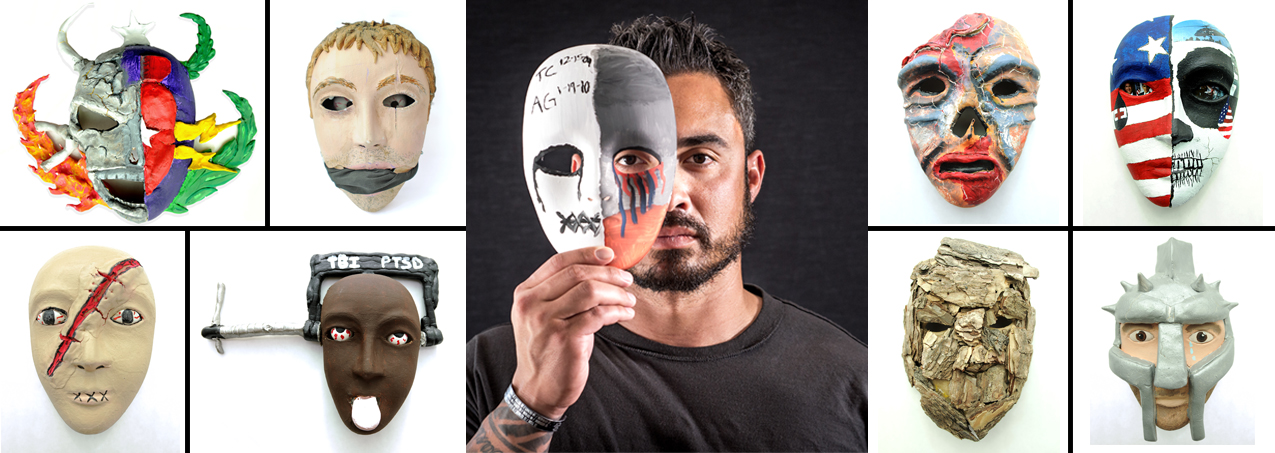Traumatic brain injury (TBI) and posttraumatic stress disorder (PTSD) have emerged as two of the most prominent injuries facing Service Members and Veterans. Individuals who live with PTSD and/or TBI experience a constellation of cognitive, physical, and psychological symptoms making it difficult to return to normal day-to-day life. Numerous evidence-based treatment options have emerged to mitigate these symptoms including art therapy in the form of mask making.
Mask making has been used in combination with conventional medical treatments, psychotherapy, and other integrative therapies to treat the persistent symptoms of TBI in Service Members, as part of a four week interdisciplinary outpatient program at the National Intrepid Center of Excellence (NICoE) at Walter Reed National Military Medical Center. Groups of patients were directed by an art therapist to create masks representing aspects of their military experience or their personal identity. Patients were offered a range of art supplies and were encouraged to bring in additional, personal materials to include in their masks. They were able to continue work on their masks throughout their four-week stay at NICoE.
The study aims to use a grounded theory approach to assess and categorize the masks, and identify signs of guilt, shame, loss, or other emotions that perpetuate the presence of PTSD, depression, or anxiety experienced by the patients. Researchers reviewed visual images of the masks along with clinical notes recorded during art therapy sessions from 370 Service Members participating in the NICoE program. Their analysis indicates that the masks can be grouped into various representations of the self, which include the self as an individual, in a relationship, in a community, and over time, as well as societal and philosophical value systems. Furthermore, common themes appeared through the analysis of the masks such as challenges resulting from physical and psychological injuries, recognition of supportive relationship and mourning the loss of past relationships, identification within the military community, use of cultural metaphors to represent emotions, representations of life as a story including both hope and uncertainty for the future, and feelings of a divided or split sense of self. See Figure 1 for a collage of masks representing these various themes.
Researchers noted that through the process of creating and then referring to their masks, Service Members were able to externalize their internal struggles. This made it easier to talk about and understand their unseen struggles, challenges, and combat experiences. In addition, art therapy provided an alternative mode of communication between the patients, family members, comrades, and members of the integrative clinical team.
This work represents one of the unique, interdisciplinary approaches the DoD is taking to address the signature, and sometimes invisible, wounds of war in order to improve the lives of Service Members who have sustained head injuries in the line of duty.

Walker MS, Kiamal G, Gonzaga AML, Myers-Coffman KA, DeGraba TJ. (2017). Active-duty military service members' visual representations of PTSD and TBI in masks Int J Qual Stud Health Well-being. 12(1): 1267317. doi: 10.1080/17482631.2016.1267317.
Your 15 minute session will timeout in approximately 10 minutes.
If you're in the middle of entering information, please close this warning and save your progress (if possible) or finish up your task.
If your session fully times out, you will lose any un-saved work.
Your current Blast Injury Research Program session has expired.
Your next click will take you away from the private area, and you will lose any work you have in-progress.
Please enter your email address, and try again.